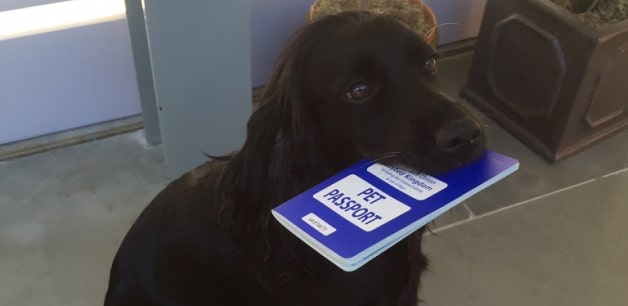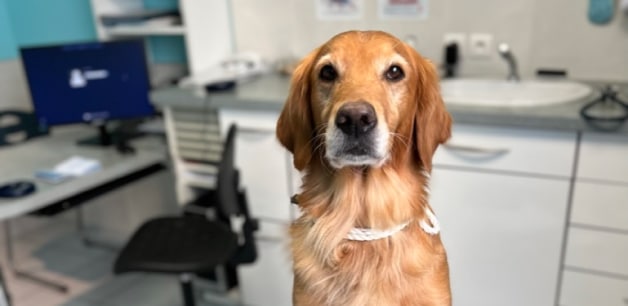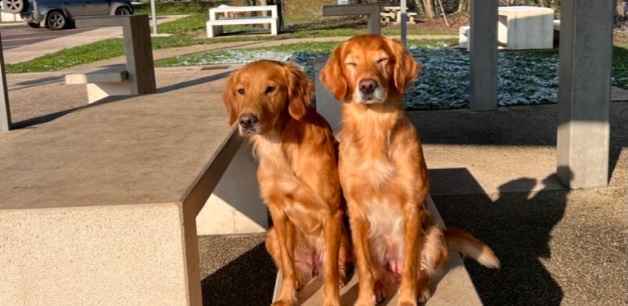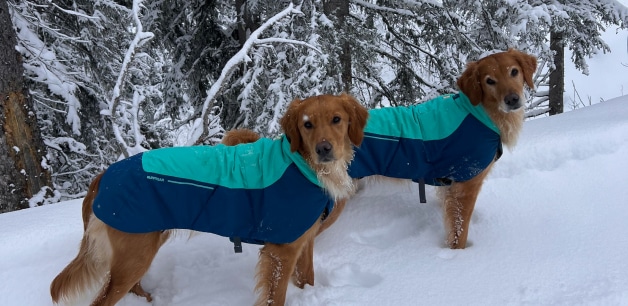A simple guide for travelling to Europe with your dog in a post-Brexit world
As a keen traveller and even keener dog lover, there is nothing I enjoy more than being able to take my dogs with me on holiday. I’m often asked what advice I can give for travelling to Europe with your canine companions. I hope this simple guide will help to prepare you for the doggy adventure of a lifetime.

The complicated (but most important) bits!
Since Brexit, unfortunately pet travel guidelines are trickier to navigate than they used to be. Where previously a simple pet passport was your dog’s gateway to Europe, there are now plenty of hoops to jump through to take your dog abroad. Always ensure you’re following current government guidelines to get you and your pet smoothly across the border.
In 2021, Animal Health Certificates (or AHCs) replaced pet passports as the valid document required to take your dog (or cat, or ferret) to Europe. An AHC costs approximately £100 initially, but can be cheaper for subsequent pets.
An AHC is valid for one trip of up to four months in the EU, and cannot be issued more than 10 days prior to your date of travel. An AHC can only be issued by Official Veterinarians (OVs) who are authorised by APHA, so make sure to check with your registered vet if they’re able. Each vet practice can set their own price for an AHC, so I always shop around for the best deal!
Before travelling to Europe, your dog will require an up-to-date rabies vaccination. Most dogs receive a booster every three years. If your dog is not up to date, note that an AHC can only be issued after 21 days from the date of vaccination. Don’t forget to factor this into your travel plans!
Research local vets at your holiday destination. A vet must treat your dog with tapeworm medication, and record this in your AHC, at least 24 hours (but no more than 120 hours) before you attempt to reenter the UK. Life hack: if you’re only going for a short period (of five days or fewer), you can simply get a UK-based vet to administer this treatment before you leave.

Plan your dog-friendly itinerary in advance
While you’re busy dotting the i’s and crossing the t’s, it’s easy to forget the steps you need to take to ensure your dog is actually comfortable on your holiday.
Within Europe, lots of countries have different relationships and perspectives on dogs. Before you plan your trip, find out whether dogs are allowed on local public transport or in cafes – so you can make the most of your time together.
You might consider getting a compact travel dog bed to make the journey easier. If you do, I’d highly recommend getting your dog used to the bed in advance, so it smells like home while you’re away.
New restrictions mean that it can be difficult to bring your dog’s food to Europe with you. During your pre-travel vet visit, consider asking your vet to sign a declaration that your dog’s food is specially required. This is especially important if your dog has allergies or intolerances to certain food, or struggles with transitioning to new diets.
Plan for emergencies by packing a pet first aid kit. I recommend you keep this stocked with gauze, microporous tape, scissors, a tick removal tool, an emergency blanket, and other useful essentials.
The above tips are often sadly forgotten in the stress of organising your dog’s travel documents. I hope this is a useful reminder to consider your dog’s comfort too.

The how-tos of travelling with your dog by land and sea
I’ve found that by far the most pleasant way to travel Europe with my dogs is by taking the Eurotunnel or the ferry, and driving through France. While car journeys can be easier for both you and your pack than air travel, there are still some steps you should take to ensure your dog’s safety and comfort.
Make sure to get a sturdy, well-ventilated crate for your dog. Prioritise a safe space for this, without the risk of bags falling, such as securing the crate in the boot.
For long journeys, I always recommend you start the day with smaller feeds and provide treats throughout the day. This helps manage their tummies and keeps their energy levels stable.
I always take a few extra water bowls, including a car friendly one which prevents water from spilling during travel. Make sure your dog has access to water throughout the journey.
Plan regular breaks to give your dogs some respite. Use these breaks to stretch their legs, have a quick play, and attend to any business they may have, whilst you can relax and take in the scenery.
Always keep a lead handy in your vehicle so you can make frequent stops without unpacking the car. Be cautious near motorways and consider bringing a long training lead to allow your dogs some freedom to roam safely in designated areas.
When travelling to warmer climates, never leave your dog in the car. Even with windows cracked, temperatures can rise rapidly, posing a serious threat to their wellbeing. Thankfully, there are plenty of dog-friendly service stations and respite areas throughout France and the rest of Europe.
Lastly, be a responsible dog owner, and carry plenty of poo bags. Clean up after your dog at rest stops to ensure a positive experience for everyone!

Adventure is out there!
Don’t let the above put you off – some of my favourite holidays of all time have been with my dogs. Whether hiking in the alps, swimming in the Mediterranean or walking the cobbled streets of cities, Ella and I have been all over Europe. However, it can’t happen without proper planning, research and organisation. Embark on your European adventure with these tips in mind, and you’re sure to create unforgettable memories with your dog.
As always, if you have any questions, please feel free to reach out to me at james@ella.co.
James & Ella x
